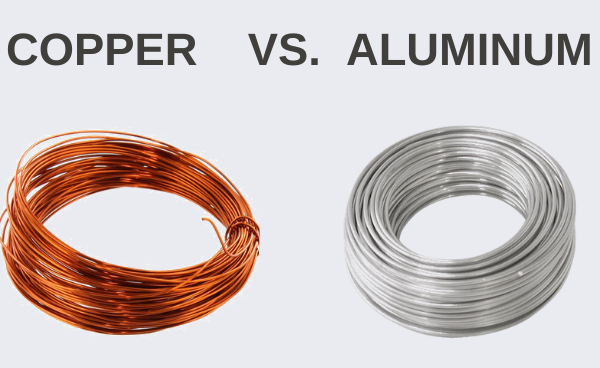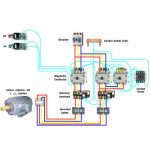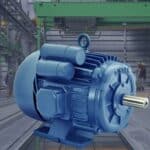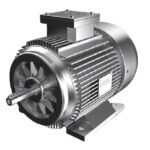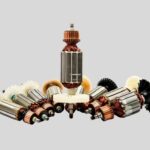Copper winding vs Aluminum winding in the motor
Copper Winding vs. Aluminum Windings debate goes on. In the 70’s, many motors were wound with aluminum, but this faded in the 80’s. It remains a topic of discussion today as engineers in a variety of industries question whether the quality and performance of aluminum windings can possibly compare with copper.
Advantages of Aluminum Winding
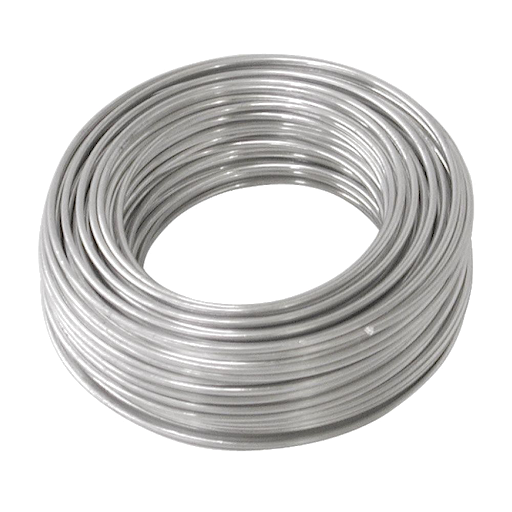
Various Advantages of Aluminium winding are listed below:
1) Less Cost
Aluminium costs a lot less than copper and thus brings commercial advantages.
2)Corrosion resistive
Aluminium has a very thin layer of oxides on the surface, which stops air and water getting to the metal, resisting corrosion.
3)Conductivity
the conductivity of copper is stronger, pound for pound aluminium proves to be almost double as effective a conductor.
4)More Flexible
Aluminium is more flexible than copper making it easier to wind in production processes.
5) lower eddy losses
The higher resistivity of aluminium gives inherently lower eddy losses in the windings. This mitigates the risk for hot spots.
Disadvantages of Aluminum Winding
Various Disadvantages of Aluminium winding are listed below:
1) Susceptible to oxidation at Joints
Aluminium connections can be susceptible to oxidation in cast resin transformers. Connections must pierce the aluminium oxide layer so that it remains gas tight [LG2] [j3].
The oxide layer of the aluminum magnet wire must be completely pierced and yet pierced in such a way to prevent air from coming in any further contact with the aluminum.
Motor manufacturers have developed high-pressure, piercing crimp connectors to do the job. These improved connection methods have helped make motors with aluminum windings every bit as reliable as motors with copper windings.
2) Higher Resistivity
- Resistivity of Copper is 1.68 x 10-8 Ohm
- Resistivity of Aluminium 2.65 x 10-8 Ohm
- Aluminium/Copper = (2.65 x 10-8) / (1.68 x 10-8) = 1.6
Aluminum’s resistivity is 1.6 times higher than copper’s resistivity. To compensate, aluminum windings cross-section must have 1.6 times larger and diameter must be 1.26 times of copper windings to offer the same conductance.
That means Aluminium wound coils are larger than an equivalent copper coil, meaning it requires approximately 1.8 times as much cross-section as copper to carry an equivalent amount of current.
It is possible to match the power performance of a motor wound with aluminum to a motor wound with copper. But since aluminum requires more turns and/or a larger diameter wire, the size of the motor will go bigger.
3)Conductivity
Aluminum’s conductivity is lower than copper.
Advantages of Copper Winding
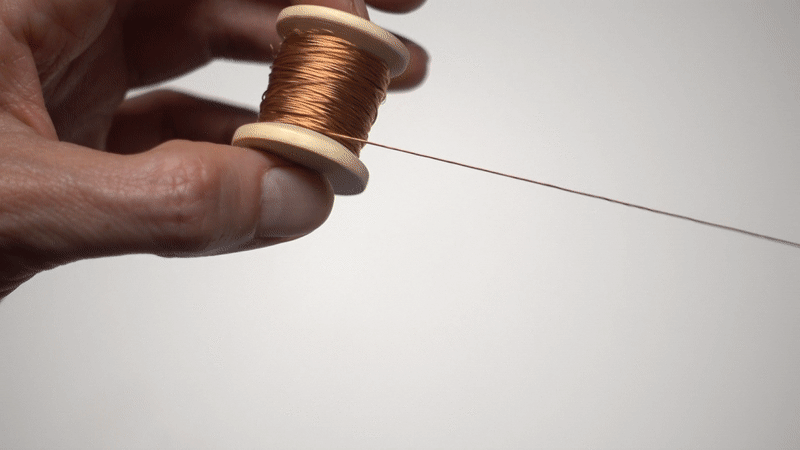
Various Advantages of Copper winding are listed below:
1) Stronger than aluminium
Copper is stronger than aluminium. It expands less but both materials have a similar maintenance schedule.
2) Higher Current carrying capacity
Copper can carry almost twice the current capacity of aluminium, which makes them slightly smaller in size than aluminium wound transformers.
3)Transformer with copper winding less expensive
In rare cases, transformers with copper winding can be less expensive to manufacture because they are smaller. But this is open to the fluctuating copper prices.
4) No Galvanic corrosion
Cu wires can be connected to each other and other metal conductors easily. There is no Galvanic corrosion as observed in Al connections.
5) Smaller winding size
Al has more resistivity than Cu, so Al winding size increases.
6) Easy to repair broken wire connection
Al winding repairs when broken is much more difficult as it cannot be soldered. Special procedures need to be followed for Al connections.
Disadvantages of Copper Winding
Various Disadvantages of Copper winding are listed below:
1)Expensive
Copper is significantly more expensive than aluminium.
2)Less Flexible
Copper is more difficult to wind into a core than the more flexible aluminium.
3)Lesser resources available
Copper is becoming more scarce and most of the supply is going to China.
Conclusion:
In terms of motor quality, reliability, and life span, aluminum windings can be every bit as good as copper-wound motors. Comparisons are fair as long as you keep efficiency issues apart when looking at copper versus aluminum.
We are very much thankful Pilot Pump Pvt Ltd Ahmedabad for their valuable Feedback to discuss and share this topic through knowledge sharing campaign by Aarohi.

